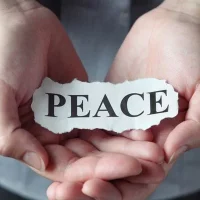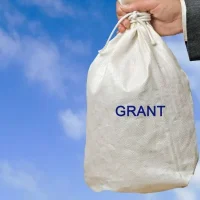The United States Embassy plays a pivotal role in fostering international relations and promoting cultural understanding through various initiatives, one of which is the provision of grants. These grants are designed to support a wide array of projects that align with the U.S. government’s foreign policy objectives, particularly in the realms of cultural exchange, education, and community development.
By offering financial assistance, the U.S. Embassy empowers individuals and organizations to implement projects that not only benefit their local communities but also strengthen ties between the United States and other nations. Embassy grants serve as a vital resource for non-profit organizations, educational institutions, and community groups seeking to address pressing social issues or promote cultural heritage.
The funding can be utilized for a variety of purposes, including educational programs, cultural exchanges, and preservation efforts. By investing in these initiatives, the U.S. Embassy aims to create a more interconnected world where diverse cultures can thrive and collaborate.
This article will delve into the eligibility criteria and application process for these grants, explore specific project types that have received funding, highlight impactful success stories, and discuss future opportunities for potential applicants.
Eligibility and Application Process
Project Proposal Requirements
While the exact requirements may vary depending on the specific grant program, applicants are typically expected to have a well-defined project proposal that outlines objectives, target audiences, and anticipated outcomes. Additionally, organizations must often demonstrate a history of successful project implementation and financial accountability.
Application Process and Preparation
The application process for U.S. Embassy grants can be competitive and requires careful preparation. Prospective applicants are encouraged to thoroughly review the guidelines provided by the embassy for each grant opportunity. This includes understanding the funding limits, project timelines, and reporting requirements.
Proposal Evaluation and Review
A well-crafted proposal is essential; it should clearly articulate the project’s goals, methodologies, and how it aligns with U.S. foreign policy interests. Furthermore, applicants may need to provide letters of support from local stakeholders or partners to strengthen their case. Once submitted, proposals undergo a rigorous review process, where they are evaluated based on criteria such as feasibility, sustainability, and potential impact.
Cultural Exchange Projects
Cultural exchange projects represent one of the most vibrant areas supported by U.S. Embassy grants. These initiatives aim to foster mutual understanding and respect between cultures through various forms of artistic expression, educational programs, and collaborative activities.
By facilitating exchanges between American citizens and individuals from other countries, these projects help break down barriers and build lasting relationships based on shared experiences. One notable example of a successful cultural exchange project is the International Visitor Leadership Program (IVLP), which brings emerging leaders from around the world to the United States for short-term visits. Participants engage with their American counterparts in discussions on topics such as governance, education, and social issues.
This program not only enriches the visitors’ understanding of American culture but also allows them to share their own perspectives and experiences with their hosts. Such exchanges have proven invaluable in creating networks of influence that extend beyond borders, fostering collaboration on global challenges. Moreover, cultural exchange projects often include artistic collaborations that showcase diverse traditions and practices.
For instance, grants may support joint performances between American artists and local performers in host countries, allowing for a rich tapestry of cultural dialogue. These initiatives not only promote artistic innovation but also encourage participants to explore their identities within a global context. By investing in cultural exchange projects, the U.S.
Embassy underscores its commitment to diplomacy through culture, recognizing that art has the power to transcend language barriers and unite people from different backgrounds.
Preservation Projects
In addition to cultural exchange initiatives, U.S. Embassy grants also support preservation projects aimed at safeguarding cultural heritage sites and practices around the world. These projects are crucial for maintaining the historical integrity of communities while promoting tourism and local economies.
By funding preservation efforts, the U.S. Embassy helps ensure that future generations can appreciate and learn from their cultural legacies. One prominent example of a preservation project is the restoration of historical landmarks that hold significant cultural value.
Grants may be allocated to local organizations working to restore ancient temples, colonial buildings, or indigenous sites that are at risk of deterioration due to neglect or environmental factors. Such projects not only contribute to the conservation of architectural heritage but also provide opportunities for community engagement and education about local history. Furthermore, preservation projects often extend beyond physical structures to include intangible cultural heritage—traditions, rituals, and practices that define a community’s identity.
For instance, funding may support initiatives aimed at documenting traditional crafts or oral histories that are at risk of being lost in modern society. By prioritizing both tangible and intangible aspects of culture, U.S. Embassy grants play a vital role in promoting cultural diversity and resilience in an increasingly globalized world.
Impact and Success Stories
The impact of U.S. Embassy grants can be seen in numerous success stories that highlight the transformative power of funding for local communities. One such example is a grant awarded to a non-profit organization focused on youth empowerment through arts education in a developing country.
The project provided workshops in music, dance, and visual arts for underprivileged youth, enabling them to express themselves creatively while building essential life skills such as teamwork and leadership. The program not only fostered artistic talent but also instilled confidence in participants, many of whom went on to pursue careers in the arts or related fields. Another compelling success story involves a preservation project aimed at revitalizing a historic neighborhood facing economic decline.
With funding from the U.S. Embassy, local stakeholders collaborated to restore dilapidated buildings while creating public spaces for community gatherings and events. This initiative not only preserved the architectural heritage of the area but also attracted tourism and investment, leading to job creation and economic revitalization.
The project exemplifies how targeted funding can yield long-term benefits for communities by enhancing their cultural identity while promoting sustainable development. These success stories underscore the importance of U.S. Embassy grants in facilitating meaningful change at both local and global levels.
By supporting projects that empower individuals and preserve cultural heritage, these grants contribute to building resilient communities capable of navigating contemporary challenges while celebrating their unique identities.
Future Opportunities and Resources
Staying Informed and Maximizing Chances of Success
Applicants are encouraged to stay informed about emerging priorities within U.S. foreign policy that may align with their project goals. To maximize their chances of success, potential applicants should leverage available resources designed to assist them throughout the application process.
Utilizing Available Resources
Many U.S. Embassies offer workshops or informational sessions aimed at guiding applicants through grant writing best practices and providing insights into successful proposals from previous years. Additionally, online platforms dedicated to grant opportunities can serve as valuable tools for identifying relevant funding sources. Networking with other organizations or individuals who have successfully secured grants can also provide invaluable insights into best practices and strategies for crafting compelling proposals.
Enhancing Capacity and Fostering Collaboration
By fostering collaboration within communities and sharing knowledge about available resources, applicants can enhance their capacity to create impactful projects that resonate with both local audiences and U.S. diplomatic interests. In conclusion, U.S. Embassy grants represent a significant opportunity for individuals and organizations committed to fostering cultural exchange, preserving heritage, and driving positive change within their communities.
Looking Ahead to a Brighter Future
By understanding eligibility criteria, navigating the application process effectively, and leveraging available resources, potential applicants can position themselves for success in securing funding for their innovative projects. As we move forward into an increasingly interconnected world, these grants will continue to play a crucial role in promoting mutual understanding and collaboration across borders.
For organizations and individuals interested in cultural exchange and preservation projects similar to those supported by the US Embassy grants, the Worcester County Arts Council’s Mini Grant Program offers a valuable opportunity. This program provides funding to support community-based arts projects within Worcester County, which can include cultural heritage initiatives. By fostering local arts, the program aims to enhance community engagement and cultural understanding, aligning well with the objectives of cultural exchange and preservation seen in the US Embassy grants.









































